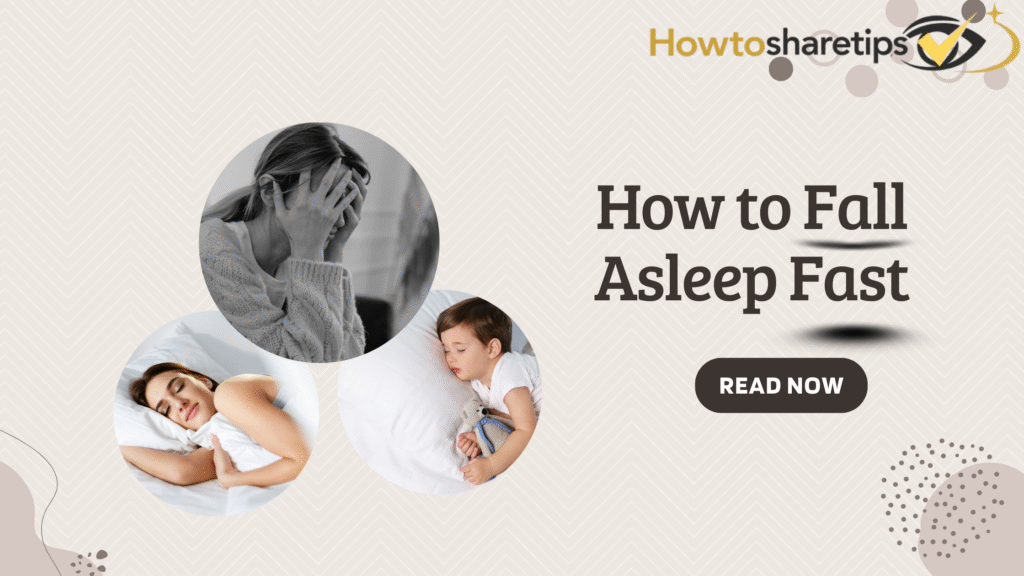Do you struggle to fall asleep at night? Do you toss and turn for hours, watching the clock and worrying about the next day? You are not alone. Difficulty falling asleep affects millions of people, impacting mood, health, and productivity. Fortunately, there are effective strategies that can help you drift off faster and enjoy more restorative sleep.
This guide shares five proven methods, supported by science, to help you relax, reduce stress, and regulate your sleep-wake cycle. By following these techniques, you can fall asleep faster and wake up feeling refreshed.
Method 1: Lower the Room Temperature
Room temperature plays a crucial role in your ability to fall asleep. Your body naturally cools down as you prepare for sleep, signaling your brain that it is time to rest. However, a room that is too hot or too cold can interfere with this natural thermoregulation, making it difficult to fall asleep or stay asleep.
According to the National Sleep Foundation, the ideal sleep temperature is between 60°F and 67°F (15.6°C and 19.4°C). Individual preferences may vary, but keeping your bedroom cool generally promotes better sleep.
Tips to optimize room temperature:
- Adjust the thermostat or open a window to keep the room comfortable.
- Use a fan or switch to lighter bedding to stay cool.
- Take a warm bath or shower before bed to relax and help your body lower its core temperature naturally.
A comfortable, cool environment signals your body that it is time to sleep, improving both sleep onset and quality.

Method 2: Try the 4-7-8 Breathing Technique
Breathing exercises can be highly effective in calming the mind and body. The 4-7-8 breathing method, developed by Dr. Andrew Weil, is a simple yet powerful technique that promotes relaxation and helps induce sleep. It is based on the ancient yogic practice of pranayama, which focuses on breath control.
Steps to practice 4-7-8 breathing:
- Place the tip of your tongue behind your upper front teeth and keep it there.
- Exhale completely through your mouth, making a whoosh sound.
- Close your mouth and inhale quietly through your nose for a count of 4.
- Hold your breath for a count of 7.
- Exhale through your mouth for a count of 8.
- Repeat this cycle four times, completing five cycles in total.
This method helps slow your heart rate, reduce stress, and signal to your body that it is time to rest. Practicing this technique nightly or whenever you feel anxious can make falling asleep faster and easier.
Method 3: Set a Consistent Sleep Schedule
A regular sleep schedule is one of the most effective ways to fall asleep quickly. Going to bed and waking up at the same time every day, even on weekends, helps regulate your circadian rhythm, your body’s internal clock that controls the sleep-wake cycle.
Why a sleep schedule works:
- Trains your body to expect sleep at a certain time.
- Reduces sleep deprivation effects such as impaired memory, concentration, mood, and immunity.
- Helps you wake up feeling refreshed naturally.
How to create a sleep schedule:
- Determine your optimal sleep duration (usually 7–9 hours for adults).
- Calculate your ideal bedtime based on your wake-up time.
- Use alarms or sleep-tracking apps to maintain consistency.
For example, if you need eight hours of sleep and want to wake up at 7 a.m., aim to go to bed at 11 p.m. Consistency is key to training your body for faster sleep onset.

Method 4: Avoid Screens Before Bed
Electronic screens emit blue light, which can interfere with melatonin production, the hormone responsible for regulating sleep. Using phones, tablets, computers, or watching TV before bed tricks your brain into thinking it is still daytime, making it harder to fall asleep.
Tips to minimize screen impact:
- Stop using screens at least one hour before bed.
- Switch devices to night mode or dark mode.
- Consider blue-light-blocking glasses to reduce exposure.
- Replace screen time with relaxing activities such as reading, meditation, or gentle stretching.
Limiting screen exposure helps maintain your circadian rhythm and promotes deeper, more restorative sleep.
Method 5: Listen to Soothing Music
Music can influence your emotions, reduce stress, and enhance sleep quality. Slow, calming music can lower heart rate and blood pressure, relax the mind, and prepare the body for sleep.
Tips for using music to fall asleep:
- Choose slow-tempo, low-pitch, and soft music such as classical, ambient, or nature sounds.
- Use headphones, speakers, or a sound machine.
- Set a timer or use a sleep app to stop the music automatically after a set period.
Music also helps stimulate alpha and delta brain waves, which are associated with relaxation and deep sleep, making it easier to fall asleep quickly.
Conclusion
Falling asleep fast is achievable when you follow practical, science-backed strategies. Lowering your room temperature, practicing the 4-7-8 breathing method, maintaining a consistent sleep schedule, avoiding screens before bed, and listening to soothing music can all help you fall asleep faster and improve sleep quality.
If you frequently struggle to fall asleep, you may have a sleep disorder, such as insomnia, caused by stress, anxiety, depression, medications, or medical conditions. Consult a doctor or sleep specialist if necessary to receive personalized guidance.
Good sleep is essential for health, mood, and overall well-being. By incorporating these strategies into your routine, you can enjoy restful, restorative nights and wake up feeling energized. Sweet dreams.



